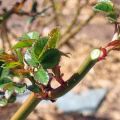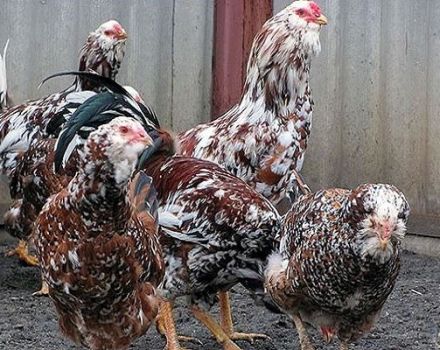Description of varieties of Border roses, planting, growing and care in the garden
Roses are the queens of the garden, they are widely used in the landscape design of summer cottages, country estates. Despite a lot of other flowers, it is the Rosaceae family that is especially popular. Planting border roses will complement the landscape in an original way and create a romantic atmosphere. To successfully grow flowers, create a marvelous garden setting, you need to familiarize yourself with a number of features.
Description
The curb rose is a miniature bush variety. Shrubs grow 60 centimeters high, compact, laconically frame the plot with a romantic border. The petals are famous for their terry base and a variety of colors. The buds can be monochrome, or combine several colors.
There are varieties in which the inflorescences change color more than once a season. The Masquerade variety is distinguished by its bright yellow, turning into a pinkish color, and in the fall the flowers become rich crimson. Border roses are not picky to care for, easily survive transplants, frost-resistant. Their feature is the possibility of cultivation in the garden and on the windowsill in a pot.
Popular varieties
There is an abundance of border rose varieties to suit all tastes. Each variety has its own characteristics, planting technology, shade range. Gardeners are advised to give preference to the following varieties.
| Cordula | The variety of roses is famous for its light aroma, spherical inflorescences of orange-scarlet color. Flowering occurs throughout the summer. The brushes are large, bright, and look great against the background of dark green leaves with a bronze tint. Red roses are often found, but their color can change up to apricot. Shrubs are undersized, branched. The variety is unpretentious in care. |
|
Little white
| Canadian roses are pale white. The flowers are terry, medium in size, not exceeding 5 centimeters in diameter. They gather in small inflorescences of 5 pieces and smell sweet. The bushes reach 80 centimeters high, require pruning and protection from wind gusts. White roses go well with other flowers. |
| Clementine | Bushes are erect, branched, grow up to 50 centimeters. Orange color gives the inflorescences romance. Border roses are capable of changing the shade to peach, it all depends on the level of lighting on the plot. Their advantage is the long period of pollen, all summer. Flowers are regularly renewed on the bushes. |
| Lidia | A subspecies of spray roses. The flower was bred in the Netherlands, it grows up to 70 centimeters. Shrubs grow up to 60 cm wide.The buds are pale pinkish, shimmer in the sun from deep crimson to light pinkish. The culture is frost-resistant, famous for its strong immunity to diseases and beetles. |
| Yellow doll | The most popular type of border roses, characterized by a neat appearance, miniature. Spreading shrub, growing in length up to 25 centimeters. Flowering occurs throughout the summer. Inflorescences are yellow, 6-7 centimeters in diameter. The variety is grown both in pots and in gardens. |
| Sugar Baby | A miniature variety of lemon-colored roses gradually turning into bright scarlet or light pink. The shrub grows up to 40 centimeters high, does not grow. Flowers tolerate wintering well, bloom all summer. Up to 15 small inflorescences are collected in one bud. It is desirable to grow the variety together with other mini-roses. |
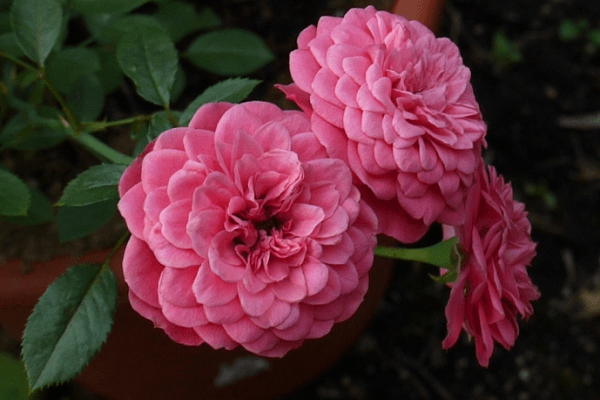
The listed varieties of border flowers of the Rosaceae family will become the highlight of the garden, they will be thanked with long flowering with proper care.
Landing rules
Roses should be planted in a well-lit, wind-protected place. Strong wind gusts take away moisture, its lack is reflected in growth and color. You cannot plant a rose in an area where other rosaceae have grown for a long time. In such a land, spores of fungal diseases, viral agents and beetles develop. Border roses are undemanding to an earthy composition. They take root on any soil, except dry, dense and swampy.
Before planting, improve the land by mixing with drainage or organic matter.
It is advisable to land in March, when the ground warms up a little. Then the roses will have time to take root and develop by winter. While the plant "settles" in a new area, it is better to cover its young bushes. This will protect them from night frost.
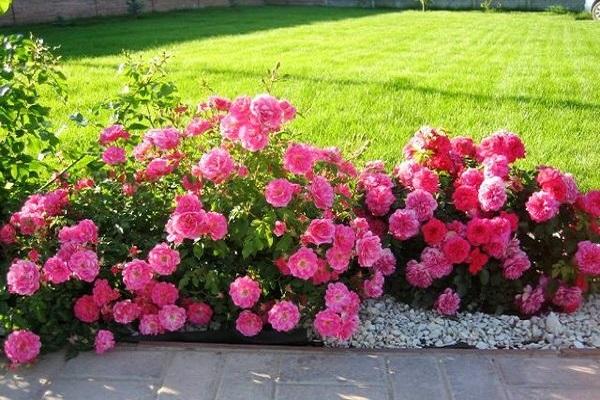
Planting technology for mini roses:
- dig a hole larger than the diameter of the rhizome;
- spread the root system in the hole, deepen the end 3 cm into the ground;
- the distance between the seedlings should be 25 cm.
After planting, compact the soil, water abundantly.
Further care
Curb roses require simple maintenance. It consists of the following activities:
- regular irrigation;
- top dressing;
- weeding;
- trimming;
- shelter for the winter.
Also, flowers are treated with special means from harmful beetles, diseases.

Soil replenishment
Curb roses should be fed with the following compositions:
- organic matter - this is horse manure, it is mixed with the ground, laid under the bush;
- in spring and autumn, compost is applied, laid out under the bushes at the rate of 5 kilograms per m2;
- when the first kidneys are formed, feed 1 tbsp with calcium nitrate. on a bucket of water.
Before adding the nutrient composition, the roses must be watered abundantly so that they do not burn. After pouring water again. Perform the manipulation early in the morning or in the evening.

Watering
Watering rose bushes should be done early in the morning or in the evening. The irrigation frequency will be approximately 2 times a week. It all depends on soil moisture, weather conditions. The water should not be icy; it is advisable to stand it up to air temperature. With excessive moisture, the plant can rot. It is also impossible to overdry it, otherwise the roses will fade.
Hot weather care
In extreme heat, you should irrigate the leaves with settled water. Carry out the procedure in the evening, when the sun hides. Due to the action of high temperature, the rose grows dull, wilting. It should be additionally fed with Zircon, potassium humate or Ecosil.
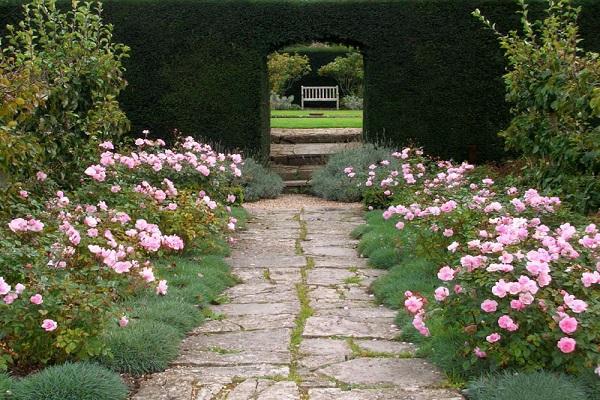
Pruning
Competent circumcision consists in excision of damaged and dry branches, the formation of bushes.
- To avoid decay, disease attack, use only clean, disinfected pruning shears.
- Trim the shrub 5-8 millimeters higher from the healthy bud.
- The event is held all summer.
- For the last time, shorten the extended new shoots and buds.
- If the branches are damaged, cut them between 2-3 leaves.
- Wild growth must be removed from roses.The elimination of the "wild" above the soil level will not give an effect - it will grow again. Cut wild branches from the very foundation.
- In order for the bushes to grow proportionally, each year, pinch all the shoots that have formed after 4 and 5 leaves, remove the buds.
In older shrubs, the central, upright branches are not cut. Only the side ones are cut a little.
Treatment for diseases and insects
Miniature flowers need regular inspection, this will help protect them from the attack of bacteria, harmful beetles. If infection has been noticed, treat immediately with insecticides. You can buy them at nurseries. To prevent diseases, the rose is fertilized with organic matter and mineral dressings.
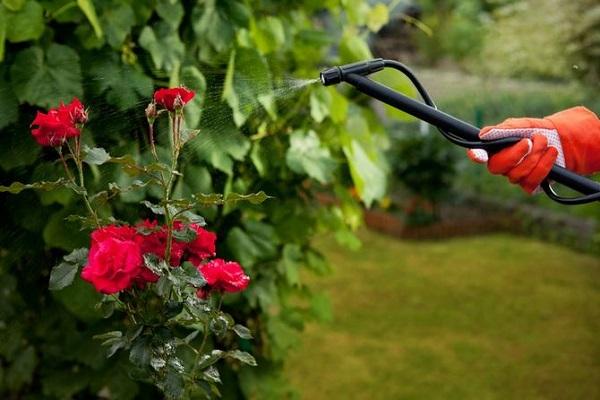
How to shelter them for the winter?
For the winter, roses should be insulated, first remove all fallen leaves and shoots. The procedure is done in this way:
- huddle the plant, the height of the embankment should be at least 20 centimeters;
- lay branches or needles around;
- put shoots tightly on them;
- the last layer is dry foliage or spruce branches.
You can also make a protective frame from cling film and roofing material.
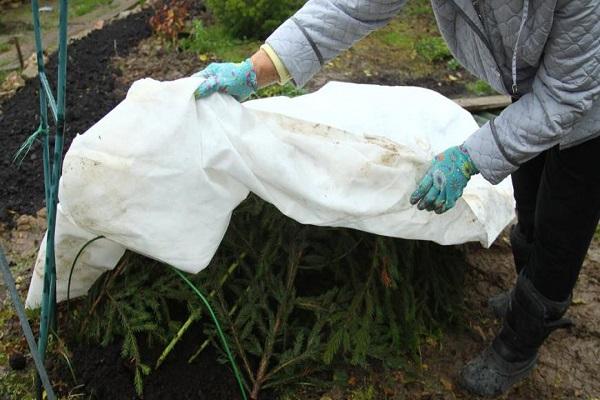
Breeding flowers
Roses are propagated by cuttings, seeds, dividing the shrub. Each method assumes an individual technique. Cuttings are in great demand. Seed propagation is the most affordable method, and dividing the bush is also, but the plant will take longer to form.
| Reproduction method name | Instructions
|
| Cuttings | Cut the branches with a sharp knife into separate shoots, so that each has at least 3 buds. Treat the seedlings in a manganese solution, keep in it for 20 minutes, then, in a stimulator of the formation of the root system. In the fertilized soil, stick the planting material so that 1 bud is located in the ground, at a slight angle. The cuttings should be spaced 25 centimeters apart. If planting work is carried out on open ground, cover each petiole with a glass jar or transparent plastic container. Water the shoots abundantly without flooding them completely. After 2 months, transplant to a permanent site. In the first winter, cover young bushes with needles, dry grass or leaves. |
| Seeds | Breeding a rose with seed is a more complicated procedure. When selecting them, take into account the shelf life, the tightness of the pack. It is better to start planting work from September until frost, so that the seedling will get stronger by summer. Pre-soak the seeds in warm water, for 7 days, then sow in a prepared container. Seedlings that have reached 8 centimeters are transplanted into pots. Planted in open soil from late May to late June. |
| Bush division | Shrub division is the easiest method for growing roses. In March, they dig in a bush, shake it off the ground. With a sharp, disinfected knife, the rhizome is separated. It is planted in prepared soil. |
Garden decoration with border roses
The variety is widely used to create flower arrangements, garden beautification. Since the flowers are compact, they blend in concisely with other cultures.
Borders of different shapes are decorated with roses. To create a romantic style of the vegetable garden, combine them with bright flowers, perennial herbs, Japanese spirea, lingonberries and barberry.







